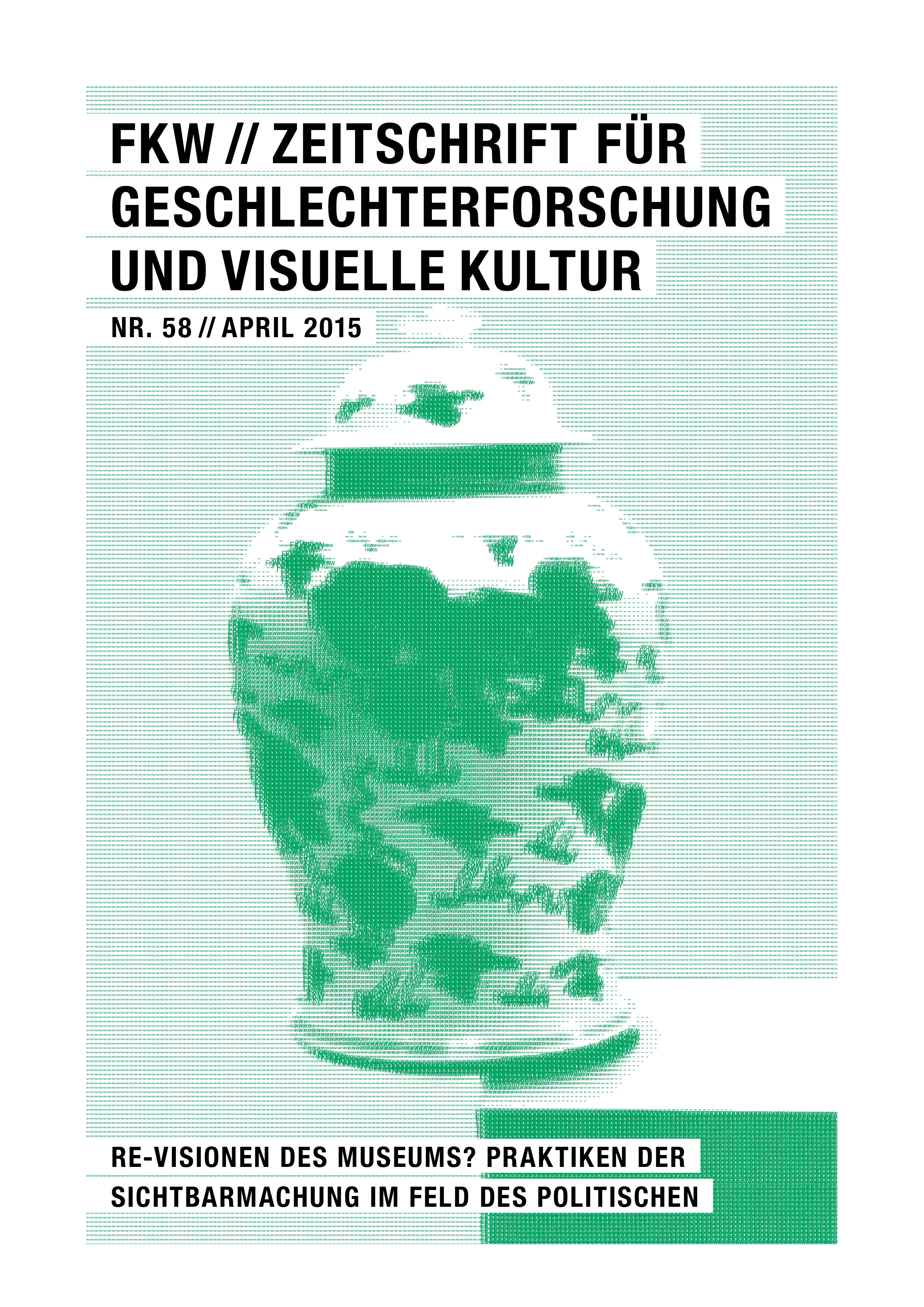Zeigen – Sich-Zeigen. Zur doppelten Struktur der Repräsentation von Museen am Beispiel des Schwulen Museums*
DOI:
https://doi.org/10.57871/fkw5820151319Abstract
Museums are institutions of power that, on the one hand, present objects to visitors and, on the other hand, show themselves as institutions with a specific identity. Within this double structure of representation, museums produce knowledge about the displayed objects as well as about themselves. They can include or exclude minor social or cultural groups. The article analyses the Schwules Museum* as an example for a political project from the 1980s that has been transformed into an institution and has therefore become a cultural player in the museum business. Based on this assumption, the article raises question like: “How does the Schwules Museum* displays its objects and represent itself to the public?” “Does the museum exclude people?” “Which role do power relations play regarding what is shown and what is not shown?” Following up Mieke Bal’s critical analysis of the American Museum of Natural History and her concept of the ‘Metamuseum’, this article takes a closer look at the two ways of representation at the Schwules Museum* with a special focus on the reflexiveness and self-awareness of the museum, as an institution that is not free from ideological implications.
Downloads
Veröffentlicht
Ausgabe
Rubrik
Lizenz
Die Autor_innen behalten das Copyright und treten keine exklusiven Nutzungsrechte an FKW ab.
Ab 2017 erscheinen alle Texte von FKW // Zeitschrift für Geschlechterforschung und visuelle Kultur unter der LizenzCC-BY-NC-ND Lizenz 4.0 International (Creative Commons, Namensnennung, Nicht Kommerziell, Keine Bearbeitung 4.0 International). Der Lizenzvertrag ist abrufbar unter: https://creativecommons.org/licenses/by-nc-nd/4.0/legalcode.de, eine allgemein verständliche Fassung unter: https://creativecommons.org/licenses/by-nc-nd/4.0/deed.de
Von 2013 bis 2016 sind alle Texte von FKW // Zeitschrift für Geschlechterforschung und visuelle Kultur unter der Digital Peer Publishing Lizenz (DPPL) erschienen. Der Lizenztext ist im Internet abrufbar unter der Adresse: http://nbn-resolving.de/urn:nbn:de:0009-dppl-v2-de3
Die Abbildungen in Ihrem Beitrag
Die Autor_innen verpflichten sich, die Abdruckgenehmigung für die in ihren Texten verwendeten Bilder bei der jeweiligen, die Bildrechte verwaltenden Institution einzuholen und die zuständige Herausgeberin über das Ergebnis zu informieren. Wir weisen darauf hin, dass die Verwendung von Bildern in wissenschaftlichen Texten gewöhnlich als Zitat angesehen und entsprechend kostenfrei gewährt wird.





